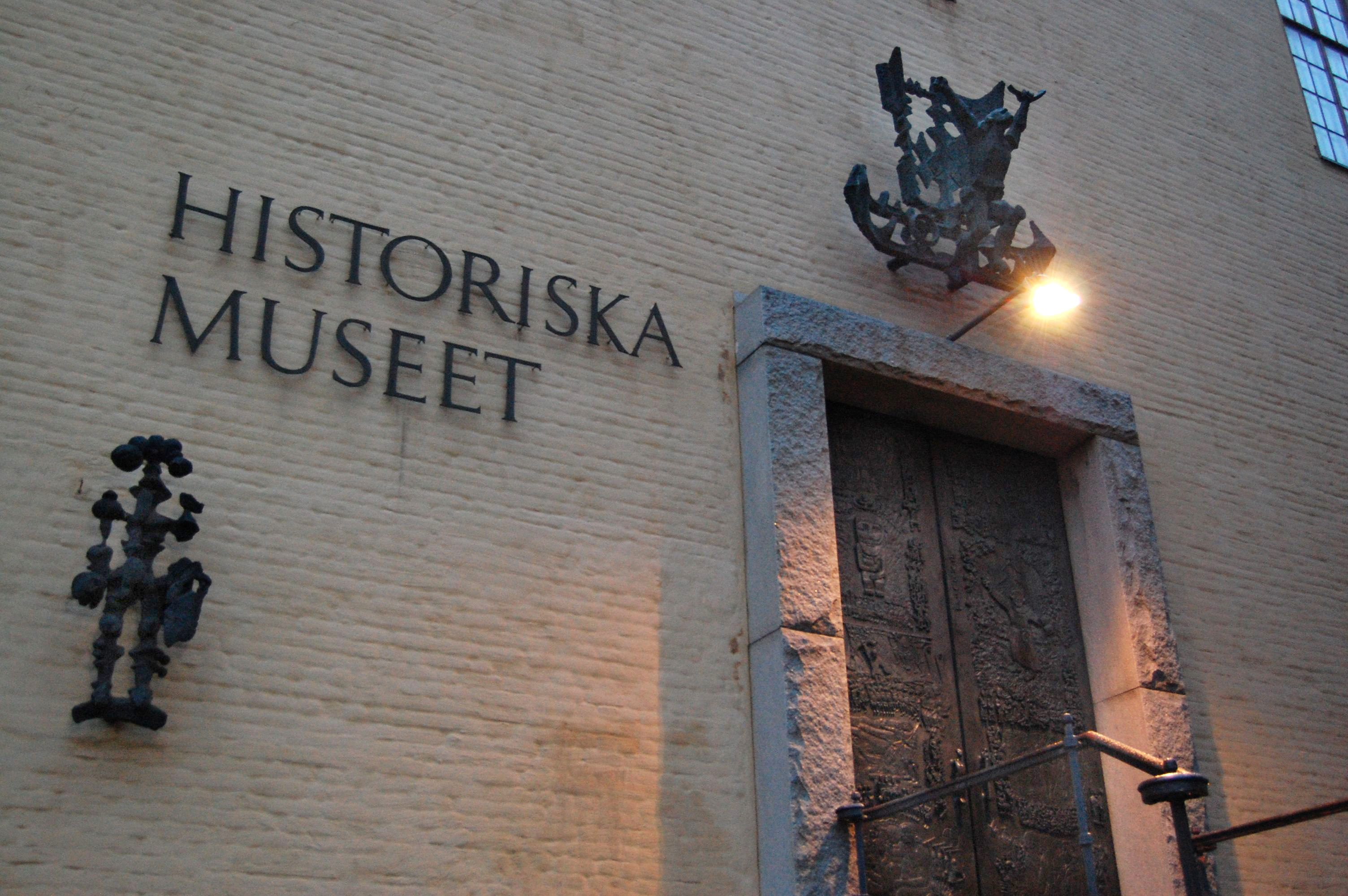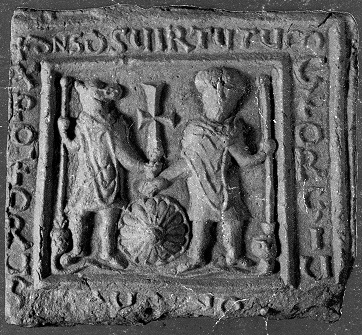|
Vätö Church
Vätö Church () is a medieval church in Vätö in Stockholm County, Sweden. It is part of the Archdiocese of Uppsala (Church of Sweden). History and architecture The church is mentioned in written sources for the first time in 1337 and was built earlier in the same century. The vaults supporting the ceiling were constructed in the 15th century. They are profusely decorated with frescos in a style reminiscent of Albertus Pictor and probably dates from the last quarter of the 15th century. The church porch was also built at around the same time. Among the church furnishings, the baptismal font is unusual and originally belonged to Nydala Abbey in Småland. The church also has a 16th-century wooden sculpture depicting Saint George and the Dragon, a piece of art inspired by the Saint George and the Dragon in Stockholm made by Bernt Notke Bernt Notke (; – before May 1509) was a late Gothic artist from the Baltic region. He has been described as one of the foremost artists of ... [...More Info...] [...Related Items...] OR: [Wikipedia] [Google] [Baidu] |
Vätö Kyrka02
Geography Vätö is an island in the Norrtälje archipelago, situated about east of the town of Norrtälje. It has a roughly triangular shape, with a length of north to south and up to east to west. Population The island has a permanent population of around 1,200 people who live in a number of small villages and individual homesteads. The largest of the villages is Harg, situated at Vätö's centre. Information A bridge connects Vätö to the mainland. Medieval Vätö Church is situated near the bridge and is decorated with 15th century frescoes painted by an unknown artist. Vätö's red granite, which is over 1.7 billion years old, is renowned as a building material. It was extensively quarried from the late 19th century to provide stone for a number of monuments, including the Royal Swedish Opera and the Riksdag building. The last of the old quarries was shut down in the 1970s. Limited quarrying resumed in the 1980s in Vätö Stenhuggeri quarry, which was first open ... [...More Info...] [...Related Items...] OR: [Wikipedia] [Google] [Baidu] |
Småland
Småland () is a historical Provinces of Sweden, province () in southern Sweden. Småland borders Blekinge, Scania, Halland, Västergötland, Östergötland and the island Öland in the Baltic Sea. The name ''Småland'' literally means "small lands", referring to many small historic provinces from which it was composed. The Latinized form has been used in other languages. The highest point in Småland is Tomtabacken, at 377 metres (1,237 ft). In terms of total area, Småland is similar in size to Belgium and Israel. Administration Whilst the traditional provinces of Sweden no longer serve any governmental purpose ''per se'', they do retain historical and cultural importance. The province of Småland today is divided almost entirely into the three administrative Counties of Sweden, counties of Jönköping County, Jönköping, Kalmar County, Kalmar, and Kronoberg County, Kronoberg. Some few small portions of historic Småland are situated in Halland County, Halland and Öst ... [...More Info...] [...Related Items...] OR: [Wikipedia] [Google] [Baidu] |
Churches Converted From The Roman Catholic Church To The Church Of Sweden
Church may refer to: Religion * Church (building), a place/building for Christian religious activities and praying * Church (congregation), a local congregation of a Christian denomination * Church service, a formalized period of Christian communal worship * Christian denomination, a Christian organization with distinct doctrine and practice * Christian Church, either the collective body of all Christian believers, or early Christianity Places United Kingdom * Church, a former electoral ward of Kensington and Chelsea London Borough Council that existed from 1964 to 2002 * Church (Liverpool ward), a Liverpool City Council ward * Church (Reading ward), a Reading Borough Council ward * Church (Sefton ward), a Metropolitan Borough of Sefton ward * Church, Lancashire, England United States * Church, Iowa, an unincorporated community * Church Lake, a lake in Minnesota * Church, Michigan, ghost town Arts, entertainment, and media * '' Church magazine'', a pastoral theology magazin ... [...More Info...] [...Related Items...] OR: [Wikipedia] [Google] [Baidu] |
Swedish History Museum
The Swedish History Museum () is a museum located in Stockholm, Sweden, that covers Swedish archaeology and cultural history from the Mesolithic period to present day. Founded in 1866, it operates as a government agency and is tasked with preserving Swedish historical items as well as making knowledge about history available to the public. The origin of the museum is the collections of art and historical objects gathered by Swedish monarchs since the 16th century. It has a number of permanent exhibitions and annually hosts special exhibitions tied to current events. Function The History Museum is part of a central museum agency called the ''Statens historiska museer'' (SHM) ("National Historical Museums"). Other museums under the aegis of this agency are The Royal Armouries, The Economy Museum, Skokloster Castle, The Hallwyl Museum, The Tumba Papermill Museum and The Swedish Holocaust Museum. History The foundation for what was to become the Swedish History Museum and th ... [...More Info...] [...Related Items...] OR: [Wikipedia] [Google] [Baidu] |
Triumphal Cross
A rood or rood cross, sometimes known as a triumphal cross, is a cross or crucifix, especially the large crucifix set above the entrance to the chancel of a medieval church. Alternatively, it is a large sculpture or painting of the crucifixion of Jesus. Derivation ''Rood'' is an archaic word for ''pole'', from Old English 'pole', specifically 'cross', from , cognate to Old Saxon , Old High German 'rod'. ''Rood'' was originally the only Old English word for the instrument of Jesus Christ's death. The words and in the North (from either Old Irish or Old Norse) appeared by late Old English; ''crucifix'' is first recorded in English in the Ancrene Wisse of about 1225. More precisely, the Rood or Holyrood was the True Cross, the specific wooden cross used in Christ's crucifixion. The word remains in use in some names, such as Holyrood Palace and the Old English poem '' The Dream of the Rood''. The phrase "by the rood" was used in swearing, e.g. "No, by the rood, not so" in ... [...More Info...] [...Related Items...] OR: [Wikipedia] [Google] [Baidu] |
Bernt Notke
Bernt Notke (; – before May 1509) was a late Gothic artist from the Baltic region. He has been described as one of the foremost artists of his time in northern Europe. Life Very little is known about the life of Bernt Notke. The Notke family came from Tallinn (Estonia) and his father was probably the trader and ship-owner Michel Notke, who had his main business there. His mother was probably Michel's second wife Gertraut, who was from Visby. Bernt Notke was born in the small town of Lassan in Pomerania. He was married (at least once), but the name of his wife remains unknown; she died before he did and is not mentioned in his last will and testament. The couple is known to have had two daughters, one named Anneke and another whose name has not been preserved and who seems to have had an intellectual disability. He seems to have spent part of his youth in Flanders and there begun to learn his trade as an artist. He probably worked in the workshop of tapestry weaver Pasq ... [...More Info...] [...Related Items...] OR: [Wikipedia] [Google] [Baidu] |
Saint George And The Dragon (Notke)
''Saint George and the Dragon'' () is a late medieval wooden sculpture depicting the legend of ''Saint George and the Dragon'', located in Storkyrkan in Stockholm, Sweden. It is attributed to Bernt Notke and was commissioned by the Swedish regent Sten Sture the Elder. It was inaugurated in 1489. It has been described as an artistic high point in the artistic production of Bernt Notke. History The statue was commissioned by Sten Sture the Elder following his victory over the Danish army in the Battle of Brunkeberg in 1471. During the battle, Sten Sture put his army under the protection of Saint George. Although not signed by him, the sculpture is widely attributed to the workshop of Bernt Notke. Notke, who had his workshop in Lübeck, lived in Sweden between 1491 and 1497 and was a frequent visitor to the country before that. The sculpture was inaugurated on New Year's Eve 1489 by a papal nuncio. The symbolism of the sculpture can be interpreted in religious and political terms an ... [...More Info...] [...Related Items...] OR: [Wikipedia] [Google] [Baidu] |
Saint George And The Dragon
In a legend, Saint Georgea soldier venerated in Christianity—defeats a dragon. The story goes that the dragon originally extorted tribute from villagers. When they ran out of livestock and trinkets for the dragon, they started giving up a human tribute once a day. And, one day, the princess herself was chosen as the next offering. As she was walking towards the dragon's cave, St. George saw her and asked her why she was crying. The princess told the saint about the dragon's atrocities and asked him to flee immediately, in fear that he might be killed too. But the saint refused to flee, slew the dragon, and rescued the princess. The narrative was first set in Cappadocia in the earliest sources of the 11th and 12th centuries, but transferred to Libya in the 13th-century '' Golden Legend''. [...More Info...] [...Related Items...] OR: [Wikipedia] [Google] [Baidu] |
Nydala Abbey
Nydala Abbey () was a Cistercian monastery in the province of Småland, Sweden, near the lake Rusken. Although the abbey ceased to operate in the 16th century, its church was renovated and converted into a Protestant church during the 17th century and is still in use. The church belongs to the Church of Sweden and is part of the Diocese of Växjö. History Nydala (from Swedish ''ny'', meaning ''new'', and ''dal'', meaning ''valley'') was called ''Sancta Maria de Nova Valle'' or just ''Nova Vallis'' in Latin. It was founded in 1143 by Cistercian monks sent out from Clairvaux Abbey in France. Together with Alvastra and Roma Abbey, it is one of the oldest Cistercian abbeys in Sweden. It is furthermore unique in Sweden in that the Cistercian ideal of almost complete isolation was respected: the abbey was built in an area away from any settlement. The abbey took slightly over a hundred years to complete, and the church was not inaugurated until 1266. Rather little is known about ... [...More Info...] [...Related Items...] OR: [Wikipedia] [Google] [Baidu] |
Vätö
Geography Vätö is an island in the Norrtälje archipelago, situated about east of the town of Norrtälje. It has a roughly triangular shape, with a length of north to south and up to east to west. Population The island has a permanent population of around 1,200 people who live in a number of small villages and individual homesteads. The largest of the villages is Harg, situated at Vätö's centre. Information A bridge connects Vätö to the mainland. Medieval Vätö Church is situated near the bridge and is decorated with 15th century frescoes painted by an unknown artist. Vätö's red granite, which is over 1.7 billion years old, is renowned as a building material. It was extensively quarried from the late 19th century to provide stone for a number of monuments, including the Royal Swedish Opera and the Riksdag building. The last of the old quarries was shut down in the 1970s. Limited quarrying resumed in the 1980s in Vätö Stenhuggeri quarry, which was first open ... [...More Info...] [...Related Items...] OR: [Wikipedia] [Google] [Baidu] |






